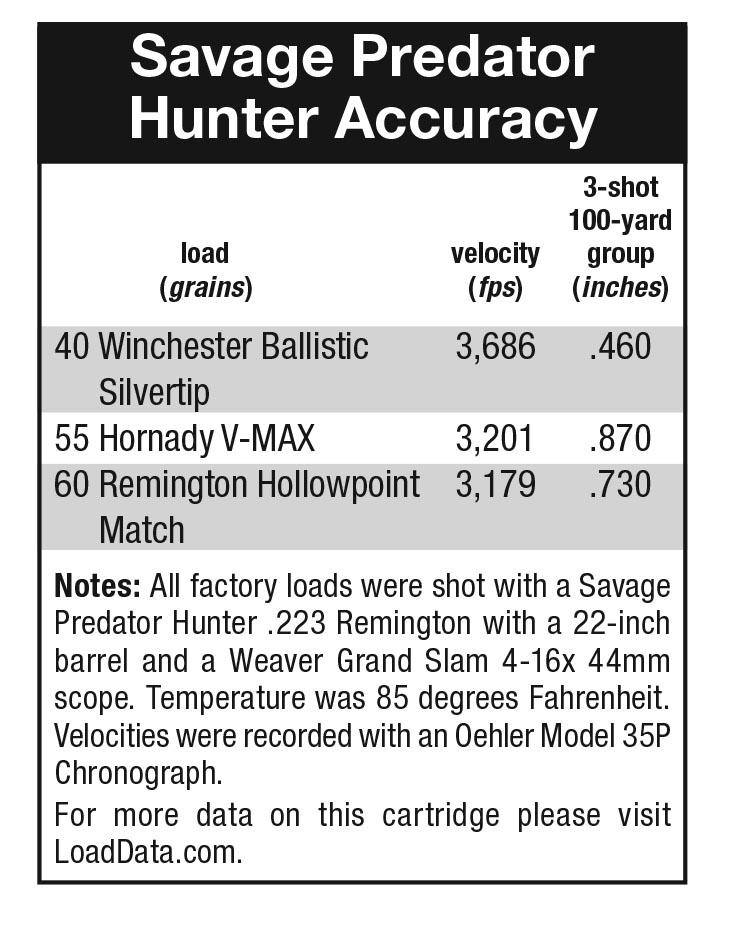Savage Predator Hunter
Range Testing a .223 Remington
feature By: Stan Trzoniec | July, 18
Always looking for something unique to take to the fields in the Northeast while in search of the wily woodchuck, the Savage Model 10 Predator .223 Remington seemed to have what it takes for summertime fun. The stock was synthetic for weather resistance, and the action was the company’s tried-and-true Model 10 complete with AccuTrigger. The test sample .223 Remington was the perfect match for small-game hunting.
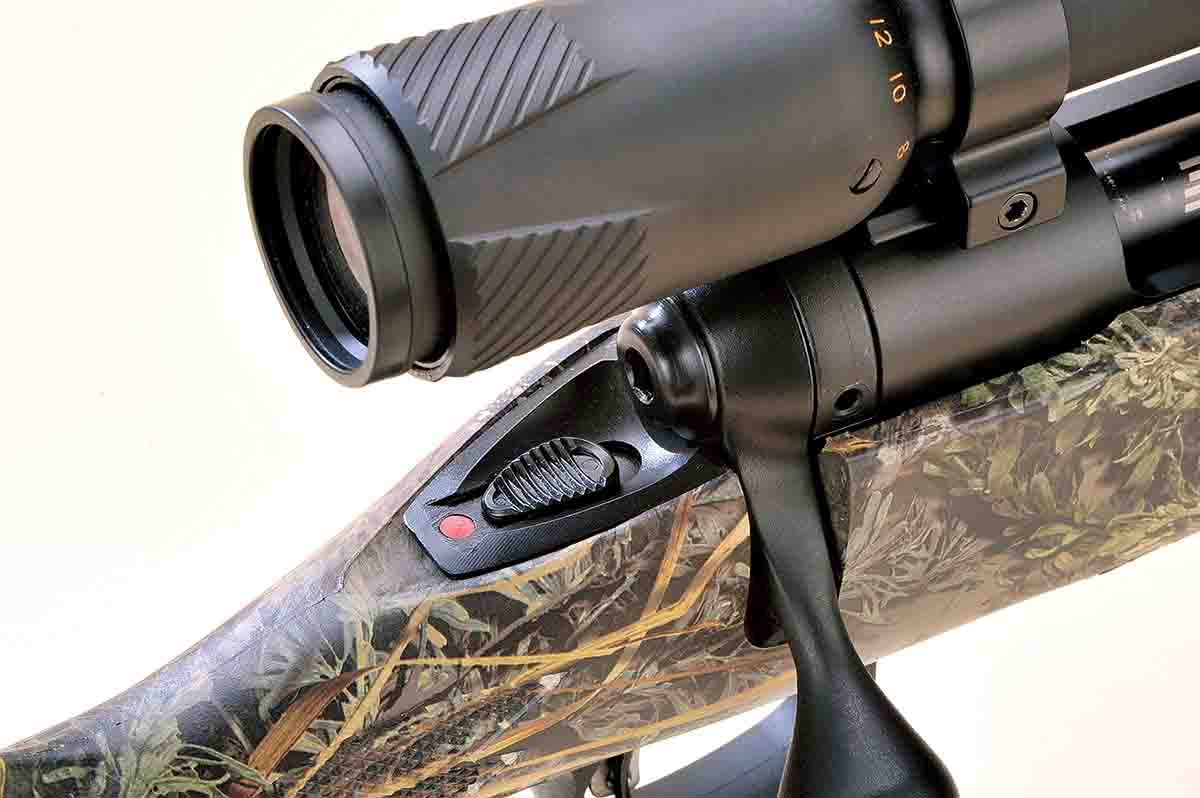
Over the years Savage has come a long way in satisfying the needs of the serious small-game and varmint hunter with a wide variety of models. While Savage was known in the past as an average gun company when compared to the likes of Remington, Winchester or Ruger, under the leadership of Ron Coburn (now retired), the company escaped bankruptcy and has been on an uphill climb to success ever since. New methods of manufacturing, new ideas in design and the desire to to provide rifles at reasonable prices have resulted in many options tailored for a wide variety of shooters. That in itself is a hard nut to crack, but having a separate category of specialized rifles narrows the field for anyone having one type of game or hunting style in mind.
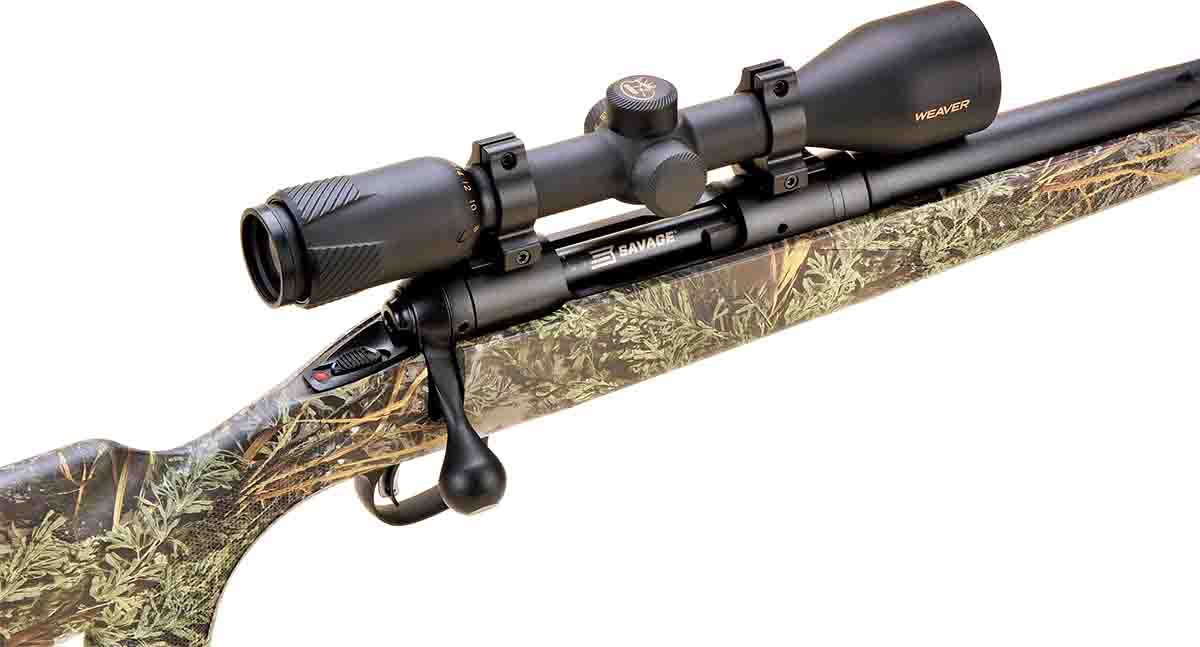
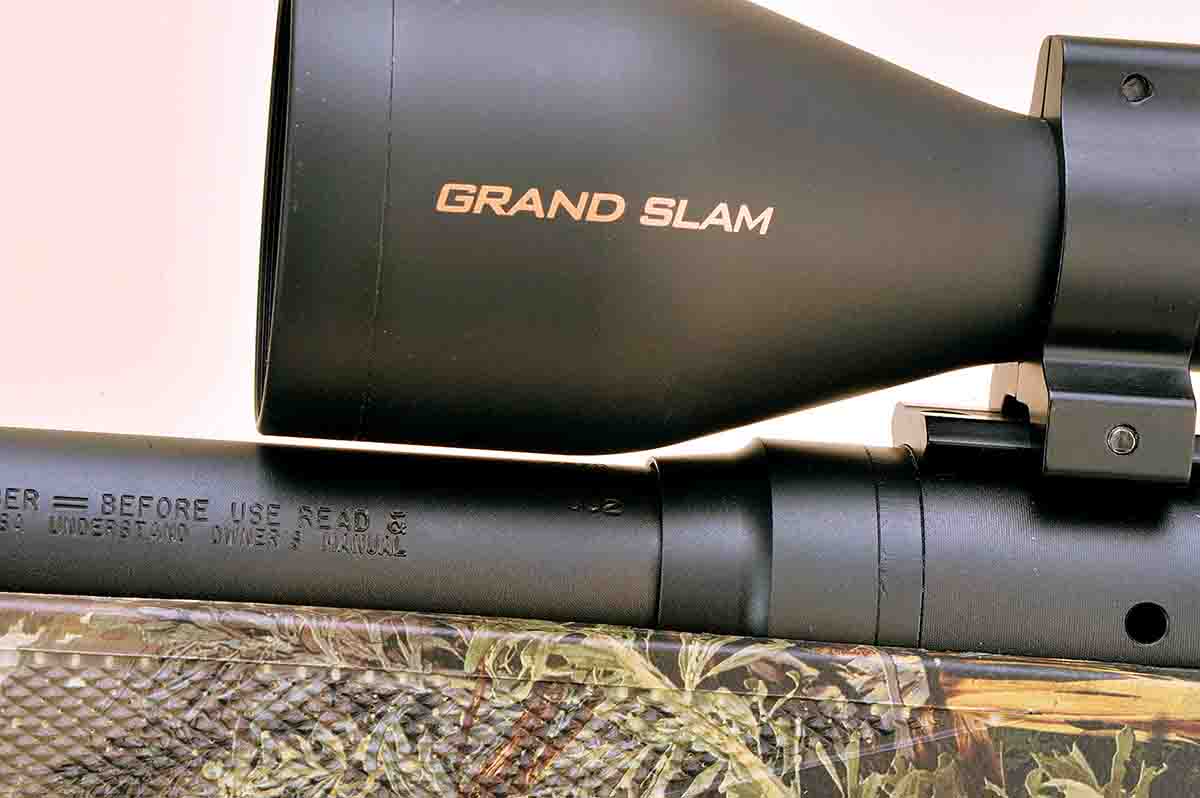
Starting out with the Realtree MAX-1 camouflage stock, it represented a good balance between the action and the somewhat heavy barrel of the rifle for comfortable field carry. Synthetic stocks have certainly come of age, and this one not only has the rugged quality that lasts for years on end, it also prevents everything from flexing while adding stability. An aluminum spine runs from the muzzle end of the stock toward the receiver, keeping everything stiff no matter the weather or other outside conditions. A break in this spine (or bedding block) forward of the magazine well allows the recoil lug to fit snugly in the stock, minimizing both radial and axial play during the life of the rifle. In addition, inletting of the stock to the action (barrel, action, tang, magazine and trigger guard) is about as perfect as one can get due to the fact that we are talking synthetic here, not wood.
On its exterior, the stock follows the common classic design of a stock with no high comb or cheekpiece, thus making it easier for both right- and left-handed shooters to use. The forearm starts out slim then widens out toward the magazine well before tapering down again at the pistol grip and the rear of the stock. One thought here would be to widen the forend to about 2 inches as an aid to field shooting where a bipod might not be the right rest to use but a tree branch might be. The pistol grip has a nice sweep to it, and it includes the stamped Savage logo on the bottom. Length of pull is 135⁄8 inches, and the butt is capped off with a very soft recoil pad for shooter comfort. Impressed, point pattern checkering is standard, provides adequate coverage on the stock and is complete with a border and green coloration for a custom look.
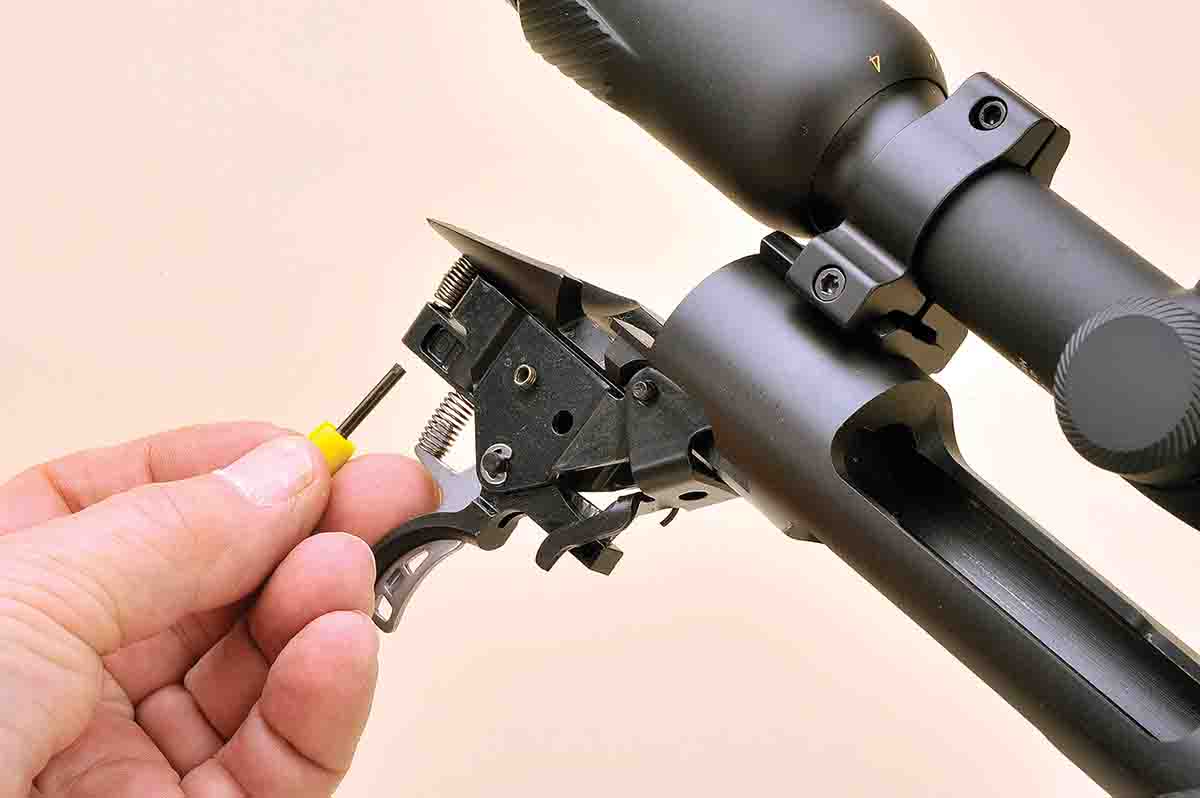
For a rifle of this type, the action received special treatment for the small-game hunters out there, especially in calibers from the .204 Ruger to the .243 Winchester. The .243 Winchester is part of the pack thanks to its following among varmint hunters who might like to hunt larger small game. While the 6.5 Creedmoor offers roughly the same velocity as the .260 Remington in a short action, both please the fence sitters out there – or those who may have a ton of .308 Winchester brass waiting to be necked down to .260.
The receiver has been streamlined to modern standards, and the somewhat awkward lever that found a home on the right side of the receiver is gone. At one time, this piece of folded metal hosted the operations of a bolt stop, sear and cocking lever. Today, because of the advances of the AccuTrigger, this has been eliminated. Additionally, to remove the bolt, all you have to do is pull back on the trigger while pushing in on the bolt release button located just forward of the trigger guard. Savage has always been big on headspace control, and while the unattractive barrel nut had its place and time, a new version, modernized and smooth to the touch, has replaced the older design, complete with a recoil lug for strength and accuracy.
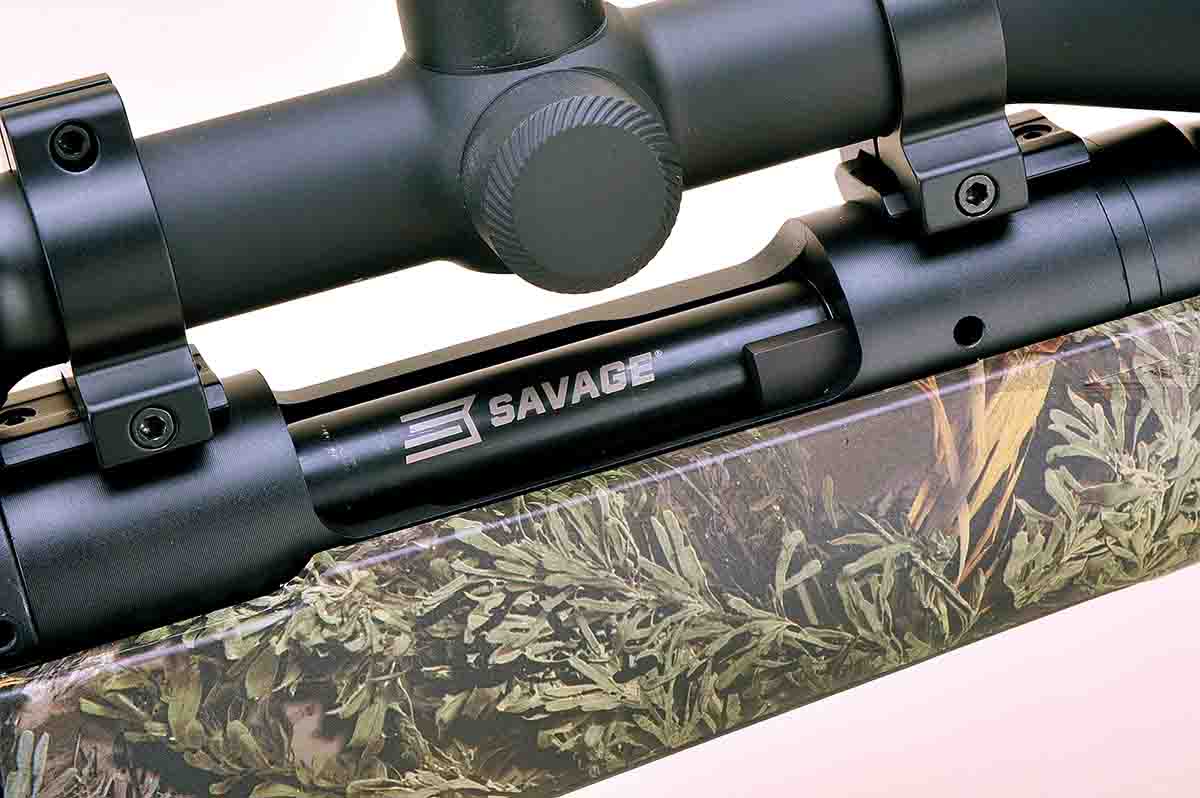
With modern CNC machines, tolerances were close but allowed the bolt to slide forward or rearward in the receiver without any friction. For varmint hunters, the bolt has a rather large bolt knob that measures .985 inch in diameter. At the rear of the bolt shroud is a cocking indicator showing the shooter, by either sight or feel, that the rifle is ready to go. Below the bolt shroud is the three-position tang safety. The forward setting is “fire.” One notch back allows the bolt to be opened or closed while the rifle remains on “safe.” The full-rearward position locks the bolt and sear. The bolt has a floating head with twin opposing lugs with a gas baffle behind them. This floating bolt head has been designed with a few thousandths of an inch of movement in the chamber – in short, it will self-adjust to a perfect cartridge/chamber fit. On the bolt face is a massive sliding extractor followed by a spring-loaded, plunger-type ejector. The bolt body is made from steel tubing, has the word “Savage” stamped on its side and is very smooth to the touch. Within the receiver and raceway, bolt manipulation proved nearly effortless thanks to modern machining methods and a small guide bar on the gas baffle. As a point of interest, the last four digits of the rifle’s serial number are stamped on the left lug (as viewed from the front of the bolt) which allows its owner to make certain the same bolt that left with the rifle from the factory is the same one packaged with the rifle at the store.
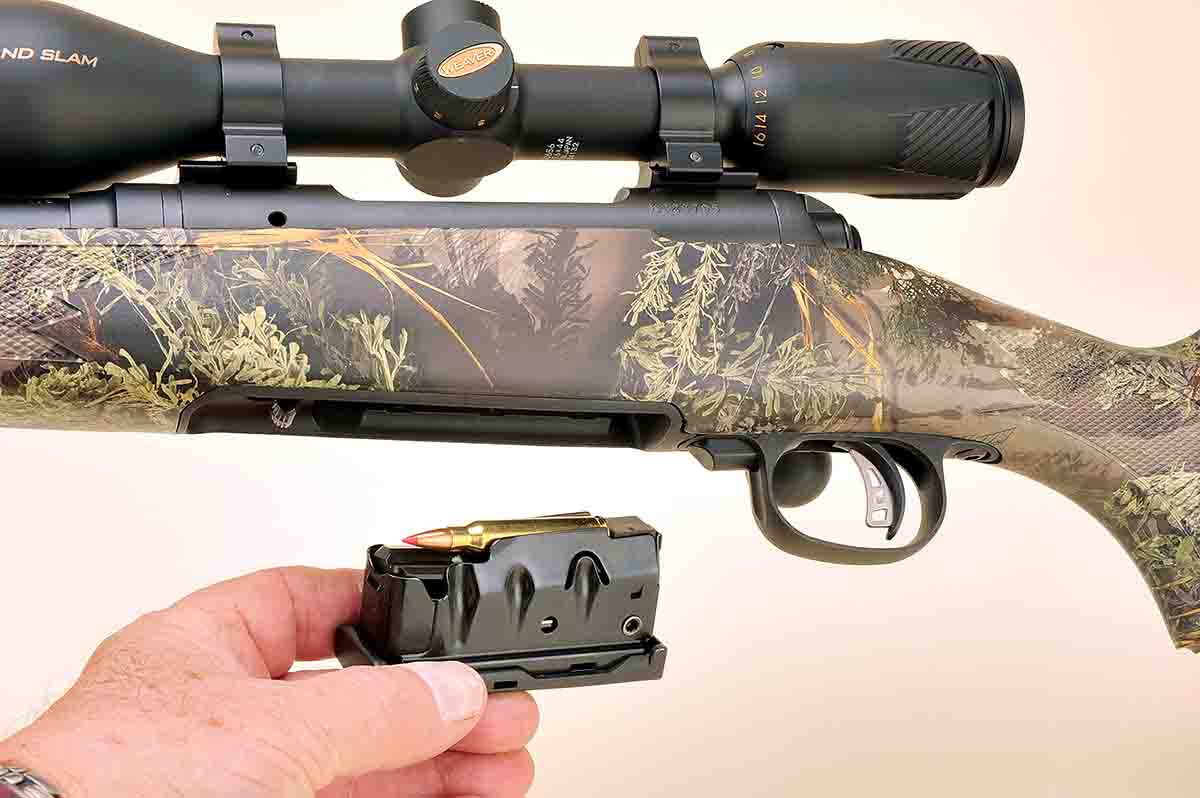
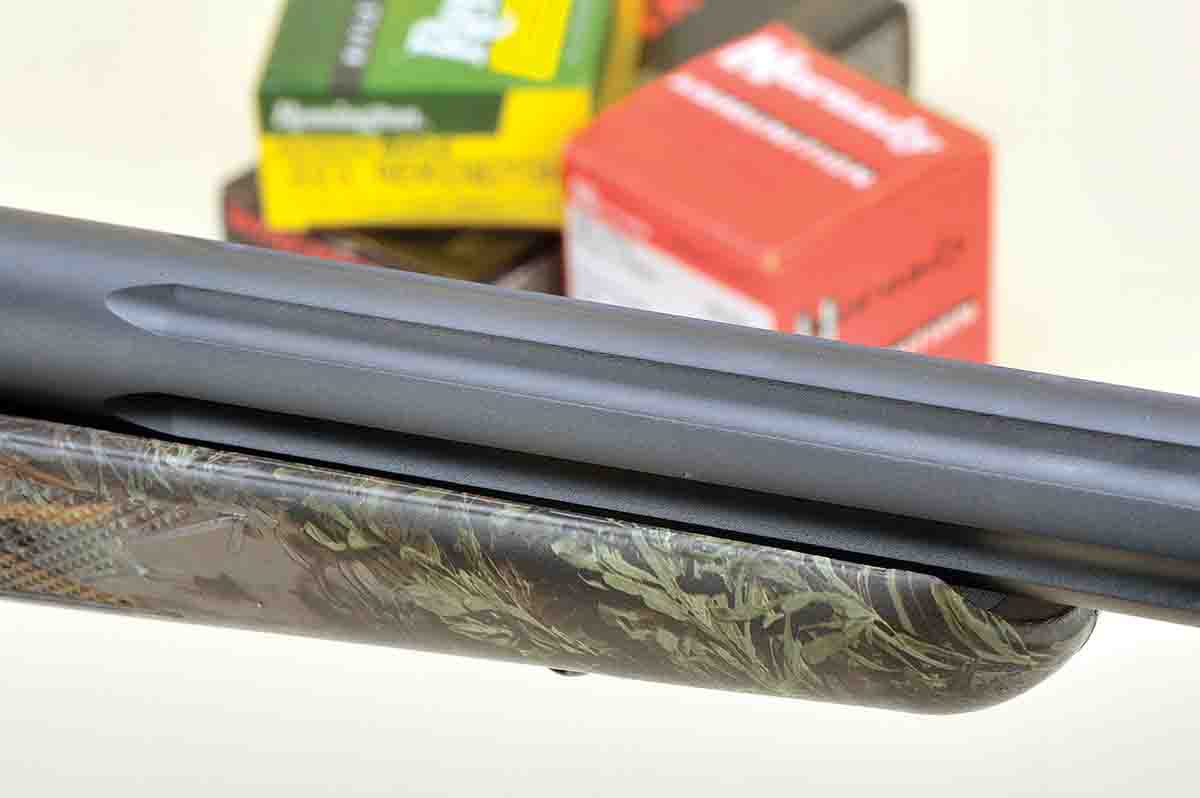
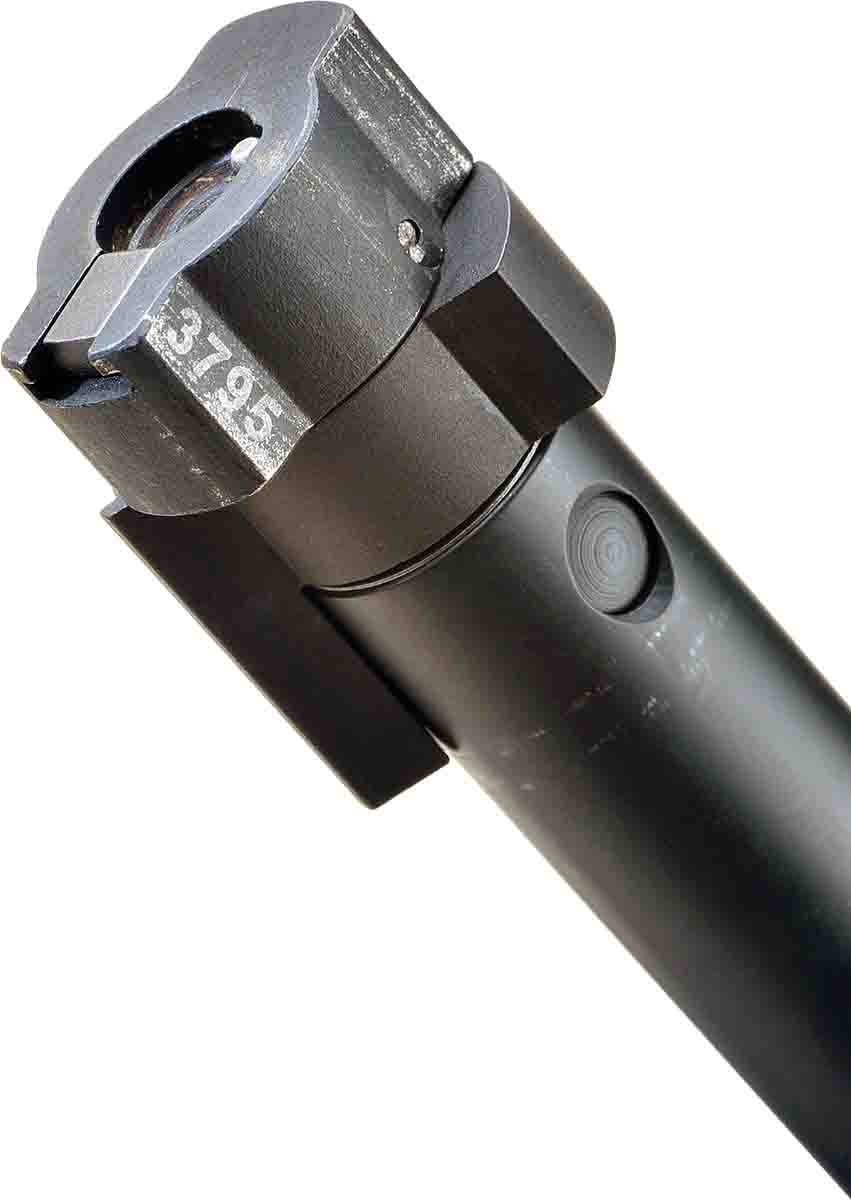
The barrel on the .223 Remington was 22 inches long; barrel length for the remaining cartridge choices is 24 inches. I would call it a medium-weight sporter barrel, as it measures 1.047 inches at the barrel nut and .740 inch at the muzzle, and it is fluted almost its entire length. A recessed target crown compliments the muzzle, and like the receiver and related parts, the barrel is finished in a rich satin black.
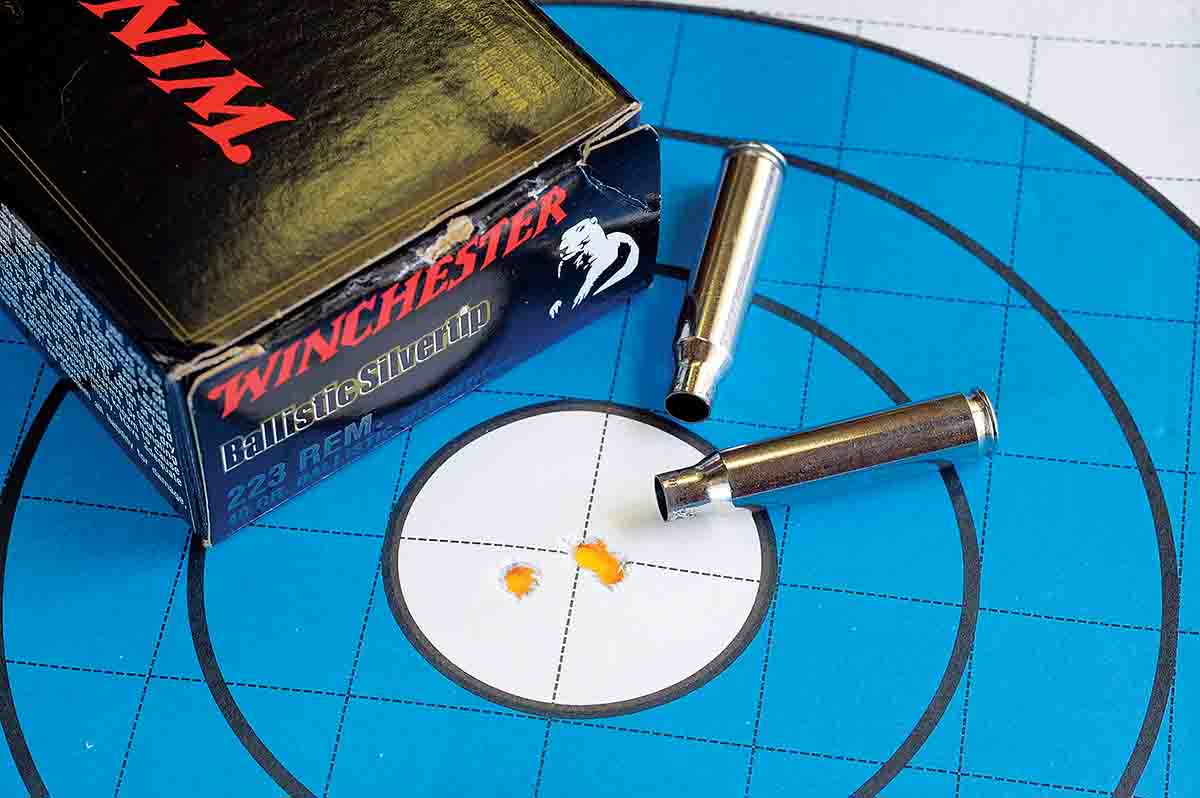
The virtues of the .223 Remington are well known when it comes to small-game hunting. Now running up against 60 years of military service, law enforcement and sporting use, I imagine that the major arms producers turn out literally millions of rounds each year to feed the appetites of end users. For handloaders, the component combinations are vast. In my experience, 55-grain bullets can be fired at 3,100 to 3,200 fps with powders ranging from IMR-4198 to Varget.
For the most part, the .223 Remington works well in any rifle. With factory loads to include samples from Hornady, Remington and Winchester, groups as small as .460 inch repeatedly showed up at the 100-yard mark. In fact, with the Savage test rifle, I had no trouble shooting groups measuring less than an inch. While handloads might shrink these groups even more, shooters who do not load their own ammunition can depend on commercial ammunition to deliver enough accuracy for any varmint hunt – which is especially helpful if you run out of handloads. With my favored Hornady 55-grain V-MAX factory load, when zeroed at 200 yards 100-yard groups are 1.4 inches high, 300-yard groups are 7.0 inches low, and at 400 yards the drop is -21.4 inches with a bullet traveling at a factory muzzle velocity of around 3,200 fps.
